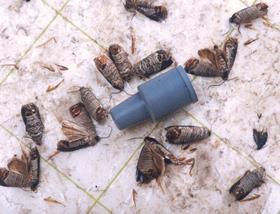
Chile is stepping up its fight against codling moth with the implementation of a pilot project to introduce biological controls in urban areas, where there has been an upsurge in incidences of the pest, particularly in domestic vines.
The strategy, which forms part of the National Lobesia Botrana Control Programme overseen by the Agriculture and Livestock Service (SAG), will see the release of Trichogramma pretiosum, a natural enemy of the codling moth. The tiny insects latch onto the moth’s eggs and reducing their opportunity to hatch. Laboratory tests show that they can colonise up to 56 per cent of eggs.
According to Grisel Monje, executive director of the programme, urban areas typically don’t respond well to other control tools such as chemicals or uprooting plants. “A biological control, by contrast, is more friendly and as it doesn’t impact human health it generates no resistance from local citizens,” she explains.
David Castro of the Foundation for Fruit Development, which is involved in the scheme along with Asoex, says the idea is to release 3,000 insects per week in 10 houses in the communities of Quilicura and Conchalí over a period of 28 weeks, enough to cover three life cycles of the moth.
It is hoped that the programme will bring about a gradual decrease in the incidence of Lobesia botrana by reducing the percentage of viable eggs per cycle.



